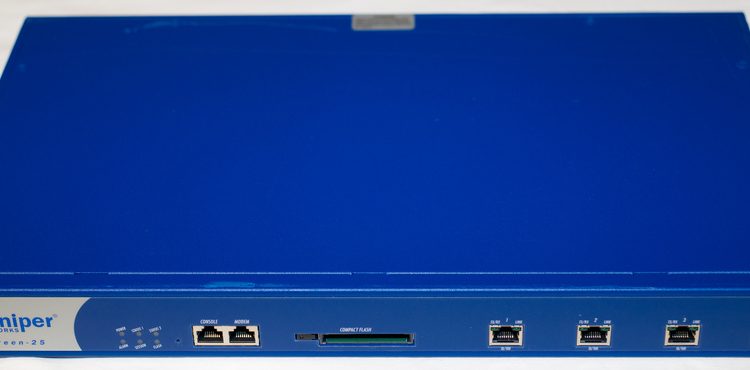One of the things I like to do is to explain how I set things up, but a firewall is one of those things that’s a bit complicated, because it depends on your situation, and what you’re trying to do in your environment. That said, there’s a template that you can probably get away with deploying, and see if it works for your content, and then you’ll see where to add the extra stuff from there. Firewall policies typically work from the top down.
This document will assume you have a simple boundary firewall. This simple firewall has two interfaces, the first being an “Outside” interface, connected to your ISP, with an IPv4 address of 192.0.2.2/24 and a default gateway of 192.0.2.1, it also has a IPv6 address of 2001:db8:123c:abd::2/64 and a default gateway address of 2001:db8:123c:abd::1. The second “Inside” interface, where your protected network is attached, has an IPv4 address of 198.51.100.1/24 and an IPv6 address of 2001:db8:123d:abc::1/64. On this inside interface, the firewall is the default gateway for the inside network.
I’ll be using simple text rules to describe firewall policies, following this format:
Source Interface: <outside | inside>
Source IP Address: <x.x.x.x/x | "any">
NAT Source IP Address: <x.x.x.x/x | no>
Destination Interface: <outside | inside>
Destination IP Address: <x.x.x.x/x | "any">
NAT Destination IP Address: <x.x.x.x/x | no>
Destination Port: <tcp | udp | icmp | ip>/<x>
Action: <allow | deny | reject>
Log: <yes | no>
Notes: <some commentary if required>
In this model, if you want to describe HTTP access to a web server, you might write the following policy:
Source Interface: outside
Source IP Address: 0.0.0.0/0 (Any IP)
NAT Source IP Address: no
Destination Interface: inside
Destination IP Address: 192.0.2.2 (External IP)
NAT Destination IP Address: 198.51.100.2 (Internal IP)
Destination Port: tcp/80
Action: allow
Log: yes
So, without further waffling, let’s build a policy. By default all traffic will be logged. In high-traffic environments, you may wish to prevent certain traffic from being logged, but on the whole, I think you shouldn’t really lose firewall logs unless you need to!
Allowing established, related and same-host traffic
This rule is only really needed on iptables based firewalls, as all the commercial vendors (as far as I can tell, at least) already cover this as “standard”. If you’re using UFW (a wrapper to iptables), this rule is covered off already, but essentially it goes a bit like this:
Source Interface: lo (short for "local", where the traffic never leaves the device)
Source IP Address: any
NAT Source IP Address: no
Destination Interface: lo
Destination IP Address: any
NAT Destination IP Address: no
Destination Port: any
Action: allow
Log: no
Notes: This above rule permits traffic between localhost addresses (127.0.0.0/8) or between public addresses on the same host, for example, between two processes without being blocked.
flags: Established OR Related
Action: allow
Log: no
Notes: This above rule is somewhat special, as it looks for specific flags on the packet, that says "If we've already got a session open, let it carry on talking".
Dropping Noisy Traffic
In a network, some proportion of the traffic is going to be “noisy”. Whether it’s broadcast traffic from your application that uses mDNS, or the Windows File Share trying to find like-minded hosts to exchange data… these can fill up your logs, so lets drop the broadcast and multicast IPv4 traffic, and not log them.
Source Interface: any
Source IP Address: 0.0.0.0/0
NAT Source IP Address: no
Destination Interface: any
Destination IP Address: 255.255.255.255 (global broadcast), 192.0.2.255 ("outside" broadcast), 198.51.100.255 ("inside" broadcast) and 224.0.0.0/4 (multicast)
NAT Destination IP Address: no
Destination Port: any
Action: deny
Log: no
Notes: The global and local broadcast addresses are used to "find" other hosts in a network, whether that's a DHCP server or something like mDNS. Dropping this prevents the traffic from appearing in your logs later.
Permitting Management Traffic
Typically you want to trust certain machines to access or be accessed by this host – whether it’s your SYSLOG collector, or the box that can manage the firewall policy, so here we’ll create a policy that lets these in.
Source Interface: inside
Source IP Address: 198.51.100.2 and 2001:db8:123d:abc::2 (Management IP)
NAT Source IP Address: no
Destination Interface: inside
Destination IP Address: 198.51.100.1 and 2001:db8:123d:abc::1 (Firewall IP)
NAT Destination IP Address: no
Destination Port: SSH (tcp/22)
Action: permit
Log: yes
Notes: Allow inbound SSH access. You're unlikely to need more inbound ports, but if you do - customise them here.
Source Interface: inside
Source IP Address: 198.51.100.1 and 2001:db8:123d:abc::1 (Firewall IP)
NAT Source IP Address: no
Destination Interface: inside
Destination IP Address: 198.51.100.2 and 2001:db8:123d:abc::2 (Management IP)
NAT Destination IP Address: no
Destination Port: SYSLOG (udp/514)
Action: permit
Log: yes
Notes: Allow outbound SYSLOG access. Tailor this to outbound ports you need.
Allowing Control Traffic
ICMP is a protocol that is fundamental to IPv4 and IPv6. Commonly used for Traceroute and Ping, but also used to perform REJECT responses and that sort of thing. We’re only going to let it be initiated *out* not in. Some people won’t allow this rule, or tailor it to more specific destinations.
Source Interface: inside
Source IP Address: any
NAT Source IP Address: 192.0.2.2 (The firewall IP address which may be replaced with 0.0.0.0 indicating "whatever IP address is bound to the outbound interface")
Destination Interface: outside
Destination IP Address: any
NAT Destination IP Address: no
Destination Port: icmp
Action: allow
Log: yes
Notes: ICMPv4 and ICMPv6 are different things. This is just the ICMPv4 version. IPv4 does require NAT, hence the difference from the IPv6 version below.
Source Interface: inside
Source IP Address: any
NAT Source IP Address: no
Destination Interface: outside
Destination IP Address: any
NAT Destination IP Address: no
Destination Port: icmpv6
Action: allow
Log: yes
Notes: ICMPv4 and ICMPv6 may be treated as different things. This is just the ICMPv6 version. IPv6 does not require NAT.
Protect the Firewall
There should be no other traffic going to the Firewall, so let’s drop everything. There are two types of “Deny” message – a “Reject” and a “Drop”. A Reject sends a message back from the host which is refusing the connection – usually the end server to say that the service didn’t want to reply to you, but if there’s a box in the middle – like a firewall – this reject (actually an ICMP packet) comes from the firewall instead. In this case it’s identifying that the firewall was refusing the connection for the node, so it advertises the fact the end server is protected by a security box. Instead, firewall administrators tend to use Drop, which just silently discards the initial request, leaving the initiating end to “Time Out”. You’re free to either “Reject” or “Drop” whenever we show “Deny” in the below policies, but bear it in mind that it’s less secure to use Reject than it is to Drop.
Source Interface: any
Source IP Address: any
NAT Source IP Address: no
Destination Interface: any
Destination IP Address: 192.0.2.2, 2001:db8:123c:abd::2, 198.51.100.1 and 2001:db8:123d:abc::1 (may also be represented as :: or 0.0.0.0 depending on the platform)
NAT Destination IP Address: no
Destination Port: any
Action: deny
Log: no
Notes: Drop everything targetted at the firewall IPs. If you have more NICs or additional IP addresses on the firewall, these will also need blocking.
“Normal” Inbound Traffic
After you’ve got your firewall protected, now you can sort out your “normal” traffic flows. I’m going to add a single inbound policy to represent the sort of traffic you might want to configure (in this case a simple web server), but bear in mind some environments don’t have any “inbound” rules (for example, most homes would be in this case), and some might need lots and lots of inbound rules. This is just to give you a flavour on what you might see here.
Source Interface: outside
Source IP Address: any
NAT Source IP Address: no
Destination Interface: inside
Destination IP Address: 192.0.2.2 (External IP)
NAT Destination IP Address: 198.51.100.2 (Internal IP)
Destination Port: tcp/80 (HTTP), tcp/443 (HTTPS)
Action: allow
Log: yes
Notes: This is the IPv4-only rule. Note a NAT MUST be applied here.
Source Interface: outside
Source IP Address: any
NAT Source IP Address: no
Destination Interface: inside
Destination IP Address: 2001:db8:123d:abc::2
NAT Destination IP Address: no
Destination Port: tcp/80 (HTTP), tcp/443 (HTTPS)
Action: allow
Log: yes
Notes: This is the IPv6-only rule. Note that NO NAT is required (but, you may wish to perform NAT, depending on your environment).
“Normal” Outbound Traffic
If you’re used to a DSL router, that basically just allows all outbound traffic. We’re going to implement that here. If you want to be more specific about things, you’d define your outbound rules like the inbound rules in the block above… but if you’re not that worried, then this rule below is generally going to be all OK :)
Source Interface: inside
Source IP Address: any
NAT Source IP Address: 192.0.2.2 (The firewall IP address which may be replaced with 0.0.0.0 indicating "whatever IP address is bound to the outbound interface")
Destination Interface: outside
Destination IP Address: any
NAT Destination IP Address: no
Destination Port: any
Action: allow
Log: yes
Notes: This is just the IPv4 version. IPv4 does require NAT, hence the difference from the IPv6 version below.
Source Interface: inside
Source IP Address: any
NAT Source IP Address: no
Destination Interface: outside
Destination IP Address: any
NAT Destination IP Address: no
Destination Port: any
Action: allow
Log: yes
Notes: This is just the IPv6 version. IPv6 does not require NAT.
Drop Rule
Following your permit rules above, you now need to drop everything else. Fortunately, by now, you’ve “white-listed” all the permitted traffic, so now we can just drop “everything”. So, let’s do that!
Source Interface: any
Source IP Address: any
NAT Source IP Address: no
Destination Interface: any
Destination IP Address: any
NAT Destination IP Address: no
Destination Port: any
Action: deny
Log: yes
And so that is a basic firewall policy… or at least, it’s the template I tend to stick to! :)








